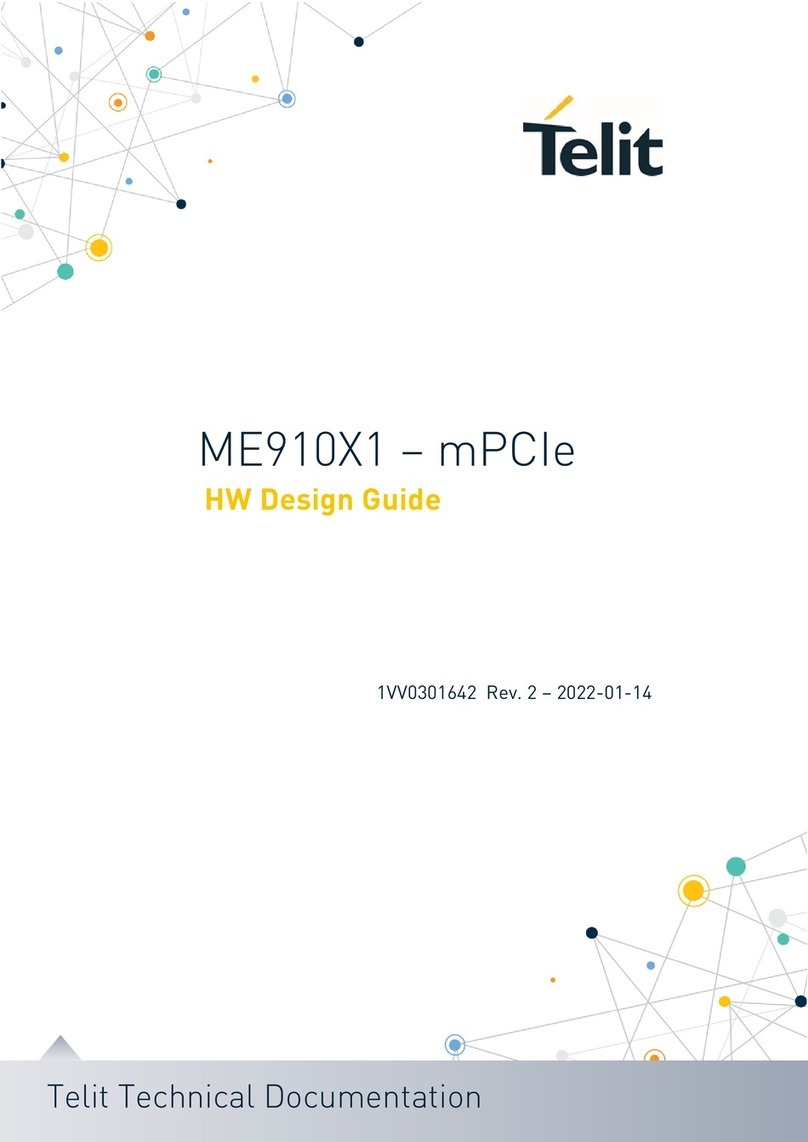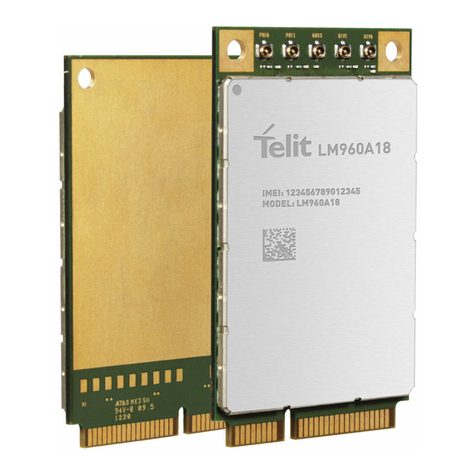
LE910Cx mPCIe Hardware Design Guide
1VV0301510 Rev. 13 Page 9of 73 2021-07-07
2. GENERAL PRODUCT DESCRIPTION
Overview
The aim of this document is to present the possible and recommended hardware
solutions useful for developing a product with the Telit LE910Cx-mPCIe module.
LE910Cx-mPCIe is the Telit platform for Mini PCIe applications, such as M2M
applications, table PC, based on the following technologies:
•LTE / WCDMA networks for data communication
•Designed for industrial grade quality
In its most basic use case, the LE910Cx-mPCIe can be applied as a wireless
communication front-end for mobile products, offering mobile communication features
to an external host CPU through its rich interfaces. LE910Cx-mPCIe can further support
customer software applications and security features. LE910Cx-mPCIe provides a
software application development environment with sufficient system resources for
creating rich on-board applications. With a dedicated application processor and
embedded security resources, product developers and manufacturers can create
products that guarantee fraud prevention and tamper evidence without additional effort
for additional security precautions. LE910Cx-mPCIe is available in hardware and band
variants as listed in Product Variants and Frequency Bands.
Product Variants and Frequency Bands
LE910Cx modules bands combinations are listed below:
1, 3, 5, 8, 9, 18, 19, 26, 28
1, 3, 5, 8, 9, 18, 19, 26, 28
2, 4, 5, 12, 13, 14, 66, 71
2, 4, 5, 12, 13, 14, 66, 71































